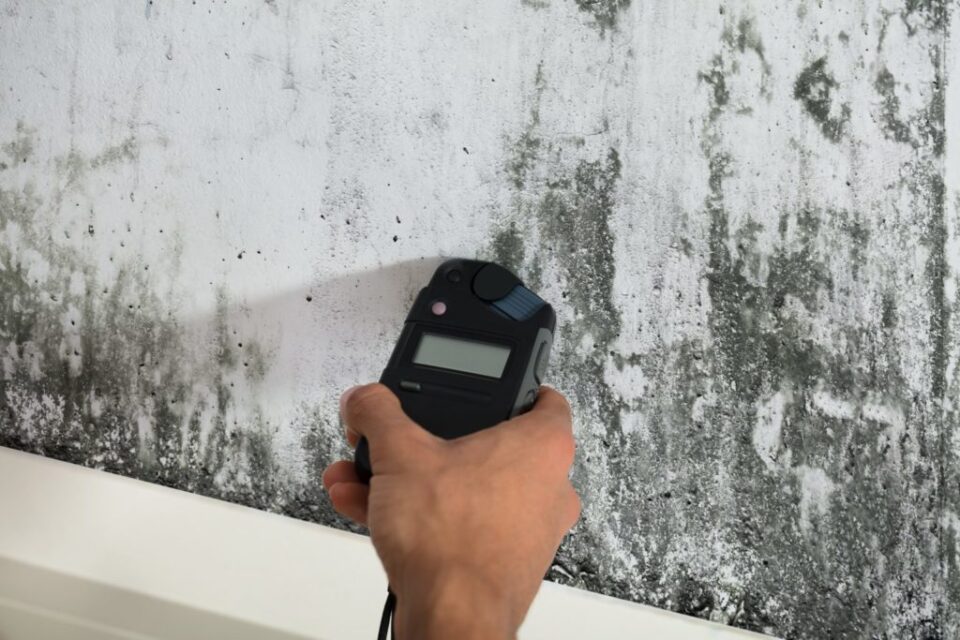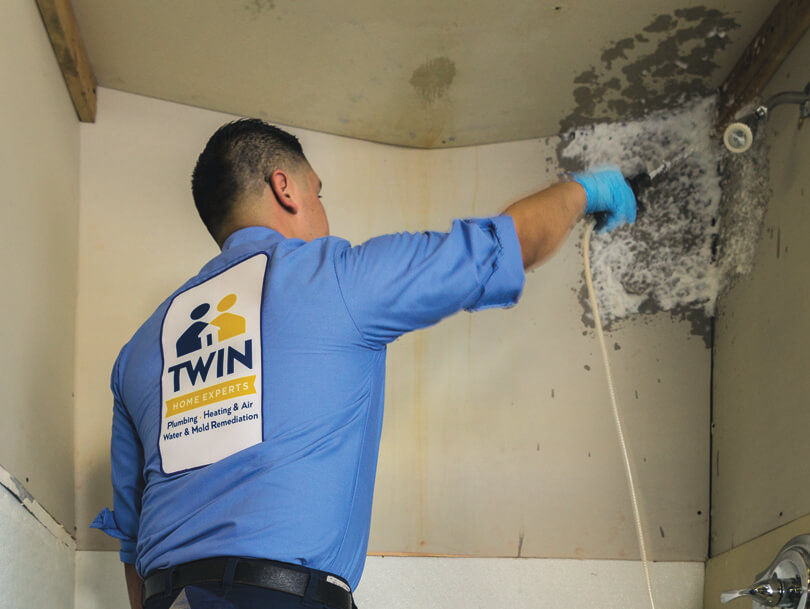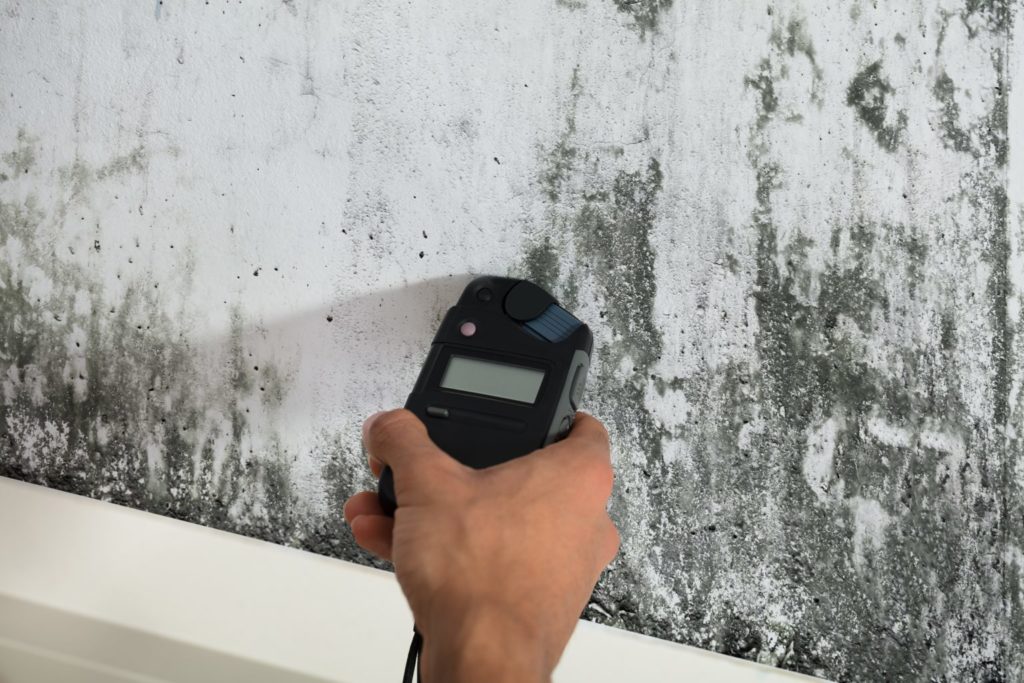Introduction
When it comes to maintaining a safe and healthy living environment, tackling mold growth is of utmost importance. Mold can not only cause significant damage to your property but also pose health risks to you and your family. To ensure the well-being of everyone in your home, it’s crucial to be well-informed about effective [mold removal] techniques. In this comprehensive guide, we’ll explore various strategies, expert tips, and frequently asked questions to help you combat mold and create a clean and healthy living space.
Understanding the Importance of Eliminating Mold
Mold, a type of fungus that thrives in damp and humid environments, can be found both indoors and outdoors. While mold plays a crucial role in nature by breaking down organic matter, it can become a significant problem when it infiltrates your home. Effective [mold removal] is vital for several reasons:
- Health Concerns: Exposure to mold can lead to various health issues, including respiratory problems, allergies, and skin irritation. By eliminating mold, you can safeguard your family’s health and well-being.
- Structural Damage: Mold growth can compromise the structural integrity of your home, causing rotting, weakening of walls, and damage to the foundation. By addressing mold promptly, you can prevent extensive and costly repairs.
- Preventing Spreading: Mold spores can easily spread to different areas of your home, leading to new growth. Removing mold promptly helps contain its spread and prevents further infestations.
- Enhancing Indoor Air Quality: Mold releases volatile organic compounds (VOCs) that can deteriorate indoor air quality. By removing mold, you can ensure a cleaner and healthier living environment.
Identifying the Signs of Mold Growth
Before delving into the [mold removal] process, it’s crucial to identify the signs of mold growth in your home. Mold can manifest in various ways, and being able to spot these indicators will help you take swift action. Look out for the following signs:
- Visible Mold: This is the most apparent sign of mold growth. Keep an eye out for black, green, or brown spots or patches on walls, ceilings, or other surfaces.
- Musty Odor: Mold often produces a distinct musty smell. If you notice a strong, unpleasantApologies for the interruption. Here’s the continuation of the article:
aroma in certain areas of your home, it could be an indication of hidden mold growth. 3. Water Damage: Areas that have experienced water damage, such as leaks or flooding, are susceptible to mold growth. Inspect these areas carefully for any signs of mold.
- Allergic Reactions: If you or your family members experience unexplained allergies, respiratory issues, or skin irritations that worsen when you’re indoors, it could be a result of mold exposure.
- Condensation: Excessive condensation on windows, pipes, or walls can create a conducive environment for mold growth. Monitor these areas closely for any signs of mold.
Remember, early detection is crucial for effective [mold removal] and preventing further damage to your home and health.
Safety Precautions: Protecting Yourself During Mold Removal
Before embarking on any [mold removal] activities, it’s essential to prioritize safety to protect yourself and minimize health risks. Here are some key safety precautions to follow:
- Wear Protective Gear: Always wear appropriate protective gear, including gloves, goggles, and a respirator mask, to shield yourself from mold spores and prevent direct contact with mold.
- Containment: Isolate the affected area to prevent mold spores from spreading to other parts of your home. Seal off the area with plastic sheets and use air purifiers to filter the air.
- Proper Ventilation: Ensure proper ventilation in the area by opening windows and using fans. This helps in reducing the concentration of mold spores in the air.
- Avoid Cross-Contamination: Take precautions to avoid carrying mold spores to clean areas. Clean and disinfect your tools and equipment after use, and wash your hands thoroughly.
- Dispose of Contaminated Materials: If you need to remove mold-infested materials, such as carpets or drywall, handle them carefully and dispose of them properly to prevent further contamination.
- Seek Professional Help: If you’re dealing with extensive mold growth or have underlying health conditions, it’s best to consult professional mold removal services to ensure safe and effective remediation.
By adhering to these safety measures, you can minimize the risks associated with [mold removal] and create a safer environment for yourself and your loved ones.
DIY Mold Removal Techniques
If you’re dealing with small areas of mold growth and feel confident in tackling the problem yourself, here are some effective DIY [mold removal] techniques:
4.1 Prevention: The First Step in [Mold Removal]
Prevention is key when it comes to mold growth. By addressing the underlying causes and implementing preventive measures, you can reduce the chances of mold infestation. Follow these preventive steps:
- Control Moisture Levels: Keep humidity levels in check by using dehumidifiers in damp areas, such as basements and bathrooms. Fix any leaks promptly to prevent water accumulation.
- Proper Ventilation: Ensure proper airflow and ventilation in your home. Use exhaust fans in kitchens and bathrooms, open windows regularly, and allow air to circulate freely.
- Inspect and Maintain: Regularly inspect your home for any signs of leaks, water damage, or condensation. Address these issues promptly to prevent mold growth.
- Dry Wet Areas: If any areas in your home get wet due to spills or flooding, dry them thoroughly within 24-48 hours to prevent mold growth.
- Use Mold-Resistant Products: Consider using mold-resistant materials, such as drywall and paint, in areas prone to moisture, such as bathrooms and basements.
By implementing these preventive measures, you can create an environment less conducive to mold growth and reduce the
Apologies for the interruption. Here’s the continuation of the article:
risk of mold infestation in your home.
4.2 Cleaning Small Mold Infestations
If you spot small patches of mold in your home, you can take immediate action to clean and remove them. Follow these steps for cleaning small mold infestations:
- Gather Your Supplies: Before you begin, gather the necessary supplies, including gloves, goggles, a respirator mask, a scrub brush, a bucket, mild detergent, and water.
- Protect Yourself: Put on your protective gear, including gloves, goggles, and a respirator mask, to safeguard yourself from mold spores during the cleaning process.
- Isolate the Area: Seal off the affected area with plastic sheets to prevent the spread of mold spores to other parts of your home.
- Moisten the Mold: Lightly spray the mold-infested area with water to minimize the release of mold spores into the air while you clean.
- Scrub the Mold: Using a scrub brush and a mixture of mild detergent and water, scrub the mold gently until it is removed from the surface. Avoid using bleach, as it can be harmful and may not effectively kill all types of mold.
- Thoroughly Rinse: After scrubbing, rinse the area with clean water to remove any remaining detergent residue.
- Dry the Area: Once the area is clean, use fans or dehumidifiers to dry it completely. Proper drying helps prevent mold from returning.
- Dispose of Materials: Dispose of any materials, such as rags or brushes, used in the cleaning process. Seal them in a plastic bag before disposing of them to prevent spreading mold spores.
- Monitor for Recurrence: Keep an eye on the cleaned area for any signs of mold regrowth. If you notice mold returning, it may indicate a deeper underlying issue that requires professional assistance.
By following these steps, you can effectively clean small areas of mold infestation and prevent further spreading.
4.3 Removing Mold from Carpets and Upholstery
Mold can also find its way onto carpets and upholstered furniture, presenting a unique challenge for removal. Here’s how you can tackle mold on carpets and upholstery:
- Safety First: Put on your protective gear, including gloves, goggles, and a respirator mask, to protect yourself from mold spores.
- Isolate the Area: If possible, remove the affected carpet or furniture from the living space and take it outside. This prevents the spread of mold spores to other areas.
- Thorough Vacuuming: Use a vacuum cleaner with a HEPA filter to thoroughly vacuum the mold-infested carpet or upholstery. Dispose of the vacuum bag immediately after use.
- Cleaning Solution: Prepare a mixture of mild detergent and water. Test it on a small, inconspicuous area of the carpet or upholstery to ensure it doesn’t cause any discoloration or damage.
- Scrubbing and Blotting: Using a soft brush or sponge, scrub the affected area gently with the cleaning solution. Avoid saturating the material; instead, blot the area to remove excess moisture.
- Rinsing and Drying: Rinse the area with clean water and blot again to remove any residual detergent. Ensure the carpet or upholstery is completely dry before returning it to its original position.
- Professional Cleaning: If the mold infestation is extensive or persists after your DIY efforts, consider hiring professional carpet and upholstery cleaning services. They have specialized equipment and expertise to effectively remove mold from these surfaces.
Remember, prompt action is crucial when dealing with mold on carpets and upholstery, as prolonged exposure can I apologize for the interruption. Here’s the continuation of the article:
potentially damage the materials beyond repair.
4.4 Effective Mold Removal Solutions for Different Surfaces
Different surfaces require specific approaches when it comes to [mold removal]. Here are some effective solutions for various surfaces:
- Wall Surfaces: For painted walls, create a solution of one-part bleach to three parts water. Apply the solution using a sponge or spray bottle, and allow it to sit for 15 minutes. Rinse with clean water and thoroughly dry the area. If the walls are unpainted or porous, it’s best to consult a professional for appropriate remediation techniques.
- Tile and Grout: Use a mixture of equal parts vinegar and water to clean mold from tile and grout surfaces. Apply the solution with a brush or sponge, scrub gently, and rinse with clean water. For stubborn stains, consider using a commercial tile and grout cleaner.
- Wood Surfaces: Mix equal parts vinegar and water in a spray bottle. Spray the solution on the affected wooden surface and gently scrub with a brush. Wipe clean with a damp cloth and ensure proper ventilation to aid in the drying process.
- Fabric and Clothing: Launder mold-infested fabrics and clothing using hot water and a detergent specifically designed for mold and mildew removal. Ensure the items are completely dry before storing them.
- Bathroom Fixtures: Mold commonly occurs in bathrooms. Use a mixture of bleach and water to clean mold from bathroom fixtures, such as sinks, tubs, and toilets. Apply the solution, let it sit for a few minutes, scrub gently, and rinse thoroughly.
Remember to always test any cleaning solution on a small, inconspicuous area before applying it to larger surfaces to ensure it doesn’t cause discoloration or damage.
Professional Mold Removal Services: When to Seek Help
While DIY mold removal can be effective for small infestations, there are situations where professional assistance is necessary. Consider contacting professional mold removal services under the following circumstances:
- Extensive Mold Growth: If the mold covers a large area, typically exceeding 10 square feet, it’s best to consult professionals. Extensive mold infestations require specialized equipment and expertise for safe and thorough remediation.
- Hidden Mold: If you suspect hidden mold behind walls, under flooring, or in other inaccessible areas, professionals can conduct thorough inspections using advanced techniques, such as thermal imaging, to locate and remove hidden mold.
- Health Concerns: If you or your family members have underlying health conditions, such as allergies or respiratory issues, professional mold removal is recommended. Professionals can minimize health risks and ensure proper remediation.
- Recurrent Mold Growth: If you’ve cleaned mold multiple times, but it keeps coming back, there may be underlying issues causing the recurrence. Professionals can identify and address the root cause of mold growth to prevent further infestations.
Professional mold removal services have the expertise, experience, and equipment to effectively handle complex mold situations, ensuring a safe and thorough [mold removal] process.
Frequently Asked Questions (FAQs)
6.1 What are the common causes of mold growth?
Mold thrives in environments with high humidity levels, moisture, and organic materials. Common causes of mold growth include water leaks, condensation, flooding, poor ventilation, and damp areas.
6.2 Can mold affect my health?
Yes, mold can impact your health. Exposure to mold spores can cause allergic reactions, respiratory issues, skin irritations, and worsen existing conditions such as asthma. It’s essential to address mold promptly to protect your health.
6.3 How can I prevent mold growth in my home?
To Certainly! Here’s the continuation of the article:
To prevent mold growth in your home, follow these preventive measures:
- Control moisture levels by using dehumidifiers in damp areas and fixing any leaks promptly.
- Ensure proper ventilation by using exhaust fans in bathrooms and kitchens and opening windows regularly.
- Regularly inspect your home for signs of leaks, water damage, or condensation and address them promptly.
- Dry wet areas within 24-48 hours to prevent mold growth.
- Consider using mold-resistant materials, such as drywall and paint, in moisture-prone areas.
By implementing these preventive measures, you can create an environment that is less conducive to mold growth and reduce the chances of infestation.
6.4 Is mold removal covered by insurance?
The coverage for mold removal varies depending on the insurance policy and the circumstances surrounding the mold infestation. In some cases, insurance policies may cover mold removal if it is a result of a covered peril, such as a burst pipe. It’s important to review your insurance policy or contact your insurance provider to understand the specifics of your coverage.
6.5 Can I use bleach to remove mold?
While bleach is commonly used as a mold cleaner, it may not be suitable for all surfaces and types of mold. Bleach is effective in removing mold from non-porous surfaces such as tiles, glass, and bathtubs. However, it may not penetrate porous materials and can damage surfaces like wood and fabric. It’s best to consult professional mold removal services or use specialized mold cleaners for effective and safe removal.
6.6 How long does mold removal take?
The duration of mold removal depends on several factors, including the extent of the infestation, the size of the affected area, and the complexity of the remediation process. Small mold removal projects can be completed within a few days, while larger and more complex cases may take several weeks. It’s important to allow sufficient time for proper mold removal to ensure a thorough and effective process.
6.7 Can I stay in my home during mold removal?
In most cases, it is safe to stay in your home during mold removal as long as proper containment measures are in place, and the affected areas are isolated. However, if you or your family members have respiratory issues or allergies, it’s best to consult with professionals and consider temporarily relocating until the mold removal process is complete.
6.8 How can I prevent mold from returning after removal?
To prevent mold from returning after removal, it’s important to address the underlying causes. This includes fixing any water leaks, improving ventilation, reducing moisture levels, and maintaining proper hygiene and cleanliness in your home. Regular inspections and prompt action can help prevent mold from recurring.
Conclusion
[Mold removal] is a crucial process to ensure a safe and healthy living environment. By being proactive in detecting and addressing mold infestations, implementing preventive measures, and following appropriate cleaning techniques, you can effectively manage mold growth in your home.
While DIY methods can be suitable for small-scale mold removal, it’s important to recognize the limitations and seek professional assistance when dealing with extensive or recurring mold problems. Professional mold removal services have the knowledge, experience, and equipment to ensure thorough and safe remediation.
Remember to prioritize safety during mold removal, protect yourself with proper gear, and follow recommended guidelines to minimize health risks. By taking the necessary steps, you can create a mold-free environment that promotes the well-being of you and your loved ones.



